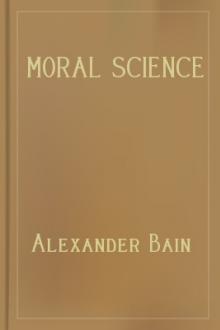Man's Fate and God's Choice by Bhimeswara Challa (feel good fiction books .txt) 📕

Read free book «Man's Fate and God's Choice by Bhimeswara Challa (feel good fiction books .txt) 📕» - read online or download for free at americanlibrarybooks.com
- Author: Bhimeswara Challa
Read book online «Man's Fate and God's Choice by Bhimeswara Challa (feel good fiction books .txt) 📕». Author - Bhimeswara Challa
Population density, combined with mass poverty is so explosive in some parts of the world that millions are migrating, like lemmings, to distant lands where they often find themselves rootless and adrift. And the pressure for food, jobs, living space and pursuit of pleasure, power, and profit is becoming so intense that the twin pandemics of suicide and homicide are increasingly finding favor in the mainstream humankind as an ‘honorable’ option to manage any problem. Turning the tables, perhaps Nature is adopting a human technique — population control — to cope with a universal problem: predatory human behavior. Like lemmings, we too migrate in large numbers when population density becomes too great and we too, after nearly two million years of evolution, have arrived at the edge of a cliff, with an abyss in front and with howling winds behind; we too are increasingly dying together in large numbers due to Nature’s fury or man-made massacres. And lemming-like, more men and women are meeting only to mate and then go their separate ways, and they too
615 Wikipedia. Lemming. Accessed at: http://en.wikipedia.org/wiki/Lemming
have a capacity for reproduction year round. And humans too are essentially solitary by nature and, like these creatures, the stronger ones drive away the weaker ones. Lemmings are also known to be cannibalistic during times of food stress; increasingly so are we, at least metaphorically, if not yet literally. And we too are more murderous in clusters and as members of mobs. In fact, we do ‘better’ than the lemmings; we kill by complacency, for example, by just ignoring the living conditions of millions; conditions that are so subhuman that it amounts to both ‘slow suicide’ and ‘mass murder’. We cannot read the mind of a lemming, but the human mind seems to have become an exterminator driven by murderous rage to annihilate everything around.
The Butterfly. The other analogy that Nature offers, perhaps the most enchanting and tantalizing, is that of the ugly caterpillar and its transformation into one of the most beautiful creatures on earth, the butterfly. It is fascinating because it involves the metamorphosis of a creature we loathe — the caterpillar — into one that we admire and want to emulate — the butterfly. And Nature — or the hand of God — is at its most transformative in this case. The breathtaking transformation of a caterpillar into a butterfly through the virtual death of pupation has led to much speculation about analogies to human fate and transformation. The great Russian short-story writer Anton Chekhov perhaps best captured ‘the anomaly of the anomaly’ when he wrote, “In nature, a repulsive caterpillar turns into a lovely butterfly. But with humans, it is the other way around: a lovely butterfly turns into a repulsive caterpillar”. The challenge is to turn ‘the other way around’ around, shed what is ugly and abominable in us and become a kinder, gentler being, and be ‘awake’, because, as Thoreau put it, ‘to be awake is to be alive’. The transformation of the creepy caterpillar has yielded some of the most beautiful poems and verses in literature. Chinese philosopher Chuang Tzu wrote, “I do not know whether I was then a man dreaming I was a butterfly, or whether I am now a butterfly dreaming I am a man”616 Why did not God create a butterfly directly like the millions of other insects he created? The reason perhaps is that God wanted us to see the transformation that even an earthly being is capable of. Our earthly life can be compared to the caterpillar stage; our physical body to the larva; the emergence of the soul from our dying or dead body to that of a butterfly from the pupa. It is a mysterious process, particularly pupation, without which there can be no transformation, no butterfly. The butterfly, also called a ‘flying flower’, is the symbol of beauty, freedom, and victory. During its first life, an egg hatches and the larva is born, growing into a pubescent caterpillar. As an earthbound creature, the caterpillar crawls on the ground. After the completion of its life as a caterpillar, a great change occurs. It begins to weave a thread around itself and an entire new life begins. The caterpillar encases itself in a chrysalis that becomes a chamber for its final metamorphosis into a butterfly. Although the butterfly appears far different from the caterpillar, the butterfly is the eventual manifestation of structures that are latent in the caterpillar. The amazing thing is that distinct stages of development into a butterfly — egg, caterpillar, cocoon, butterfly — all are very different from each other, and each phase has a specific purpose, orchestrated by God, not the butterfly, although the caterpillar has to cooperate and be involved in some aspects of these changes. Researchers have noted that some of the rudimentary structures of the pupa are already present in the mature caterpillar, even during the embryonic development in the egg. In its passage from one form to another, the butterfly draws upon these structures which were earlier underdeveloped or camouflaged by other more dominant features. In short, the butterfly is not a different being or a newer
616 Chuang Tzu. The Quote Garden. Accessed at: http://www.quotegarden.com/butterflies.html
form of life than the caterpillar; through a magical process it so transforms itself that it bears no physical resemblance to its own form, and an earthbound crawling creature suddenly becomes bird-like.
What lessons can we draw from this ‘Miracle in Nature’? Why Nature endowed only the caterpillar with this capability, and what cosmic cause it serves, we do not know, and if it will let man emulate the lowly caterpillar we can only wonder. Clearly that kind of power is not of the caterpillar but of the divine. There is much to learn from this fragile but exquisite creature, the butterfly, but in our behavior, at this point of time, we are more like the voracious caterpillar. Like the caterpillar, we do not know what ‘enough’ for us is. The caterpillar spends as much as 90 percent of its time eating; we are close to that in our appetite for resources. We must note that in this kind of transformation, what actually happens is that at a certain stage, some innate but hidden features come to the fore and assume commanding positions while others, till then dominant disappear.617 Who orchestrates and fine tunes this complicated process. What ‘intelligence’ does the caterpillar have? Can our ‘intelligence’ match that of the creepy creature? For our own transformation, we must find a way to subdue or eliminate the obnoxious features that have come to dominate our lives, and draw upon the dormant but latent nobler features. The butterfly chooses to be born twice in one lifetime and lives two complete lives. In this way, butterflies tell us that we live forever, that life is continuum, that transformation even in ‘one life’ is possible. It visibly illustrates what the Bhagavad Gita says, that what we deem as death is but another phase of life, not the finale.
The physical aspects and forms of the butterfly during the four stages of its life teach us the meaning of metamorphosis and the limits of transformation. Metamorphosis is more than physical change that happens between the stages of caterpillar and butterfly. Just as the body of a ‘creepy’ caterpillar dies and becomes a winged being, we must induce the death of the ego-self to become a new and ‘improved’ product. To come out of the cocoon, the pupa agonizingly struggles and in the process, it becomes stronger: which is a lesson for us that struggle and suffering are necessary for real change. Just as each time a butterfly flaps its colorful wings, it leaves behind a glow of iridescent light behind, our lives also could leave a trail of compassion. We can learn humility from the butterfly: to accept where we are in our stage of growth. We can learn from the butterfly that vulnerability is part of the process of living, and being soft can be a strength, and that death is a step towards life. Like a caterpillar, which eats its way out of its egg, and then starts eating the leaves of its host plant until it grows too big for its old skin, we too seem ravenous in our assault on Nature. In the case of the caterpillar, it must first become a curious creature, alive but not fully, and then build for itself the chrysalis or pupa, a quiet house, a safe place for it to grow into its true form. Without becoming a pupa, a caterpillar cannot become a butterfly.
The crucial issue is, what could the human equivalent of a pupa be? An indeterminate intermediate being? Or more probably, a state of consciousness that is half human and half successor sub-species? How much of what we have must we shed, and how much of what is inherent but hidden must be activated? And how do we acquire that kind of capacity and intelligence? This is the contingency that Sri Aurobindo visualized. According to him, ‘between this supramental being and humanity, there would be transitional beings, who would be human in birth and form, but whose consciousness would approach that of the supramental being. These transitional beings would appear prior to that of the full
617 Murray Stein. Transformation: Emergence of the Self. (No.7, Carolyn and Ernest Fay Series in Analytical Psychology, David H. Rosen, ed.). 2005. Texas A&M University Press. College Station, Texas, USA. pp.14- 15.
supramental being, and would constitute an intermediate stage in the Earth’s evolution, through which the soul would pass in its growth towards its divine manifestation as the supramental being on earth.’618
Perhaps the telling clue in the transformation of the caterpillar is that to trigger the process, it creates a safe environment around itself, a sort of buffer from the world, a place where it can simply be without the enabling environment; the caterpillar will only be a caterpillar, not a soaring butterfly. To change the condition, we must change the context, which is as much internal as external. We must do the same as that creepy creature: go within and create a conducive and compatible environment, as close to the divine as possible, around and within us. The butterfly is an excellent example of the inevitability of our march towards consciousness. Each human being is absolutely unique — one of the many species of ‘butterfly’ — but the process of transformation will inexorably lead each of us to the same outcome. In the words of Genece Hamby, “Our world and organizations have been run by caterpillars who, with an insatiable appetite to have more, have destroyed their environment. People, in the caterpillar stage of transformation, step over others





Comments (0)